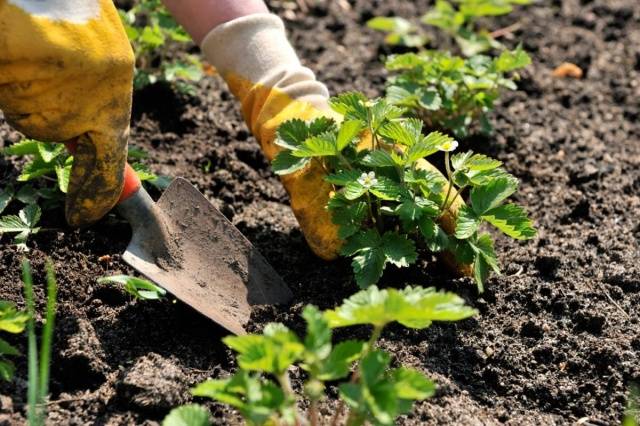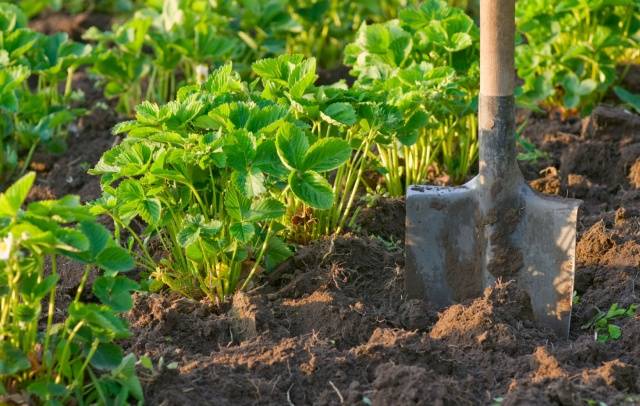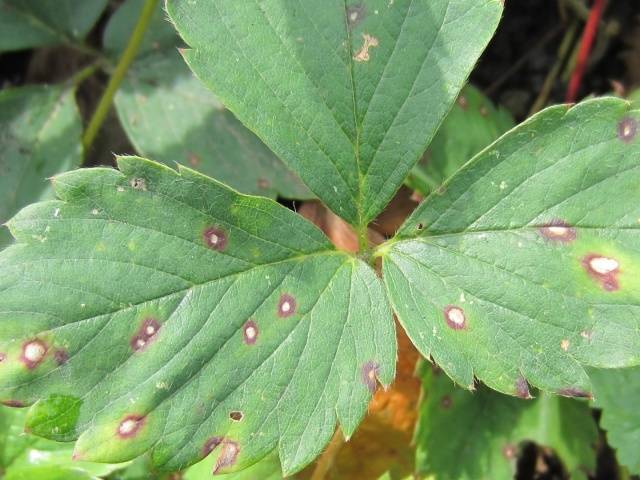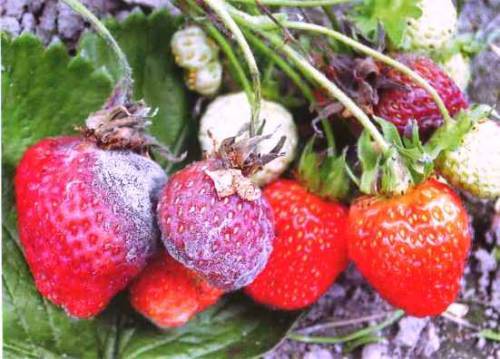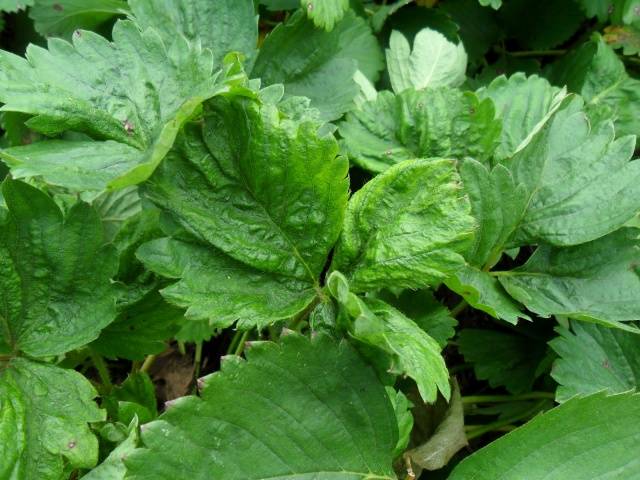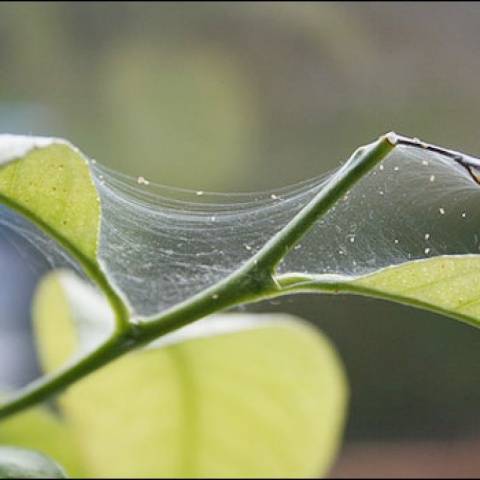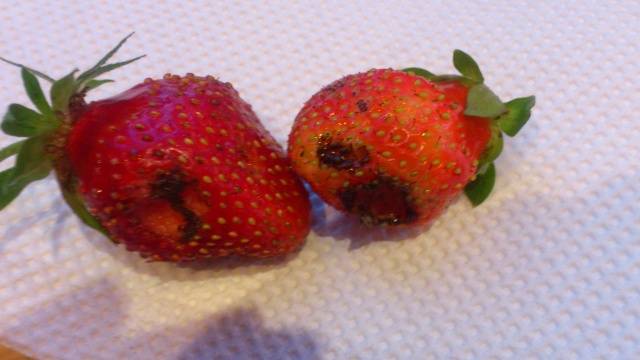Content
Processing strawberries in spring from diseases and pests allows you to keep plants healthy and get a good harvest. To protect strawberries, you can choose special preparations and folk methods. Treatment is carried out by spraying or watering plants.
Processing rules
Strawberries are treated for diseases and pests after the snow melts. First you need to remove last year's leaves and other organic debris. Then the top layer of the earth is removed, where many pests hibernate.
Strawberry beds must be dug up. Too dense plantings are eliminated, since they attract insects and create conditions for the appearance of fungus.
The following recommendations for caring for strawberries will help reduce the likelihood of the spread of diseases and pests:
- before planting, the soil and soil are cultivated;
- buy seedlings from trusted suppliers;
- every 3-4 years a new site is selected for planting;
- need to weed regularly weeds;
- lupine or other insect repellent plants are planted next to the strawberries.
Special solutions are used to process strawberries. They are used for watering or spraying plants. Works of any kind are carried out in the morning or in the evening. It is not allowed to perform procedures in direct sunlight.
Treatment for diseases
Most of the lesions in strawberries are caused by fungi. Lesions cover the root system, leaves, stems and berries of plants.
Timely pruning of strawberries will help to avoid symptoms of disease. Spring processing of strawberries from diseases is carried out before flowering.
Powdery mildew
The ground part of the strawberry suffers from powdery mildew. The lesion spreads in conditions of high humidity and heat.
Powdery mildew has the appearance of a white bloom that appears on the lower leaves of plants. Affected leaves curl up and turn brown. The disease prevents pollination of strawberry flowers.
To avoid the spread of powdery mildew, you need to use healthy seedlings, regularly care for the plantings and not let the strawberries grow.
Strawberries can be treated with Quadris in spring. Its active substance, when it comes into contact with the affected areas, blocks the flow of oxygen. As a result, harmful spores are killed. Processing is carried out by spraying the plantings.
White and brown spotting
Spotting affects strawberries during the growing season. As a result, the ovaries and fruits die, the green mass is lost.
The disease can be identified by the following signs:
- the appearance of spots of light or brown color, located at the edges of the sheet;
- with the development of the disease, the petioles die off.
Removing dry stems and leaves of strawberries, removing affected bushes will help to avoid the development of spotting. Nitrogen fertilizers are applied in limited quantities in spring to avoid the build-up of green mass and the spread of dampness.
An effective remedy for spotting is a solution of potassium permanganate. 5 g of this substance is diluted in 10 l of water, then used for sheet processing.
For spot treatment use fungicides aimed at eliminating disease spores. In case of mass destruction, preparations containing copper are used (Bordeaux liquid, oxychloride).
Gray rot
The causative agent of gray rot appears when there are plant residues in the soil. Cooling and high air humidity contribute to its spread. At first, the disease manifests itself in the form of spots and white bloom, which grow rapidly.
10 ml of water requires 10 ml of iodine. Planting must be processed every 10 days.
When the first symptoms of gray rot appear, an infusion of garlic is prepared (1 kg of dried leaves is enough for a bucket of water). An infusion of mustard is also effective (50 g of powder is needed for a bucket of water).
How to process strawberries from gray rot, you can choose from a wide range of products. In spring, chemicals are allowed. Against gray rot, the preparations "Euparen Multi" and "Fundazol" are used.
For the prevention of gray rot, 2 tablets of the drug "Alirin-B" are dissolved in 1 liter of water, after which the plantings are treated before the beginning of flowering. After 10 days, the procedure can be repeated.
Root rot
Root system diseases are observed in young plants. The lesion manifests itself in the form of small black spots that gradually cover the entire root system. In the future, the strawberry bushes turn brown.
Root rot cannot be treated. The strawberries are dug up and burned to prevent the spread of the disease.
Therefore, in the spring, increased attention is paid to preventive measures. Only rotted compost is used to feed the plantings. Additionally, after the snow cover has melted, the beds can be treated with Trichodermin.
Pest control
Insects cause irreparable harm to strawberry plantings. To maintain the planting, special preparations are used. For prevention, you can use folk remedies with disinfectant properties. The main pests of strawberries and their control are listed below.
Strawberry mite
For the berry grower, one of the most dangerous pests is the strawberry mite. These insects prefer young plantings and the lower parts of the bushes. The mite is a carrier of strawberry fungal diseases, therefore, increased attention is paid to combating it.
The presence of a strawberry mite can be identified by the following signs:
- strawberries develop slowly;
- plant leaves are twisted and torn at the edges;
- the berries dry out before ripening;
- freezing of strawberries.
Most of these symptoms are noticeable during the fruiting period of the plants. Spring from pests and diseases it is necessary to carry out preventive measures aimed at disinfecting soil and plants.
The following methods will help get rid of the strawberry mite:
- pour a broth based on tomato tops or infusion of dandelions;
- we treat with special preparations (Karbofos and others).
Plantings can be treated with onion peel infusion. This requires 0.2 kg of husk and a bucket of water. The tool is infused for 5 days, then it must be filtered and poured over the strawberries.
Spider mite
The spider mite selects dry areas that are well lit by the sun. The period of its activity begins in early spring. It is possible to identify the presence of this insect due to the cobweb that remains on the leaves of the strawberry.
You can fight spider mites with the following methods:
- infusion based on wormwood or tobacco;
- processing with "Karbofos".
You need to spray the plants in the spring during the growth of the leaves. The procedure is performed twice with a break of 10 days.
Weevil
The weevil causes irreparable harm to the planting of strawberries, as it prefers leaves and flower stalks. It is identified by withered flowers. Early varieties of strawberries are especially affected by weevil attacks.
An infusion of wormwood will help to avoid the appearance of a weevil. Previously, 1 kg of plants is crushed, poured with water and brought to a boil. After 10 minutes, filter the broth and add a little soap (up to 40 g). The resulting product is diluted in 10 liters of water.
On the basis of wood ash, an effective solution is obtained for combating pests of strawberries. 10 liters of water requires 3 kg of wood ash. The infusion must be kept for a day, and then used for spraying.
Another remedy for weevil is the infusion of tansy. 1 kg of this plant is poured into 5 liters of water and left for a day. The resulting infusion must be boiled for 30 minutes, filtered and added with soap. 10 liters of water are added to the solution and a ready-made tool for sheet processing is obtained.
Slugs
Slugs are capable of destroying strawberry plantings, so you need to take timely measures to combat them. To do this, the area with strawberries must be fenced off with a small ditch, where lime, ground pepper or wood ash are poured.
Superphosphate, which is poured between the rows with plantings, will help get rid of slugs. Pest control is carried out in the evening, as they are most active at night.
Whitefly
The whitefly is a small insect that resembles a butterfly. She lives in the shade and cannot stand direct exposure to the sun.
Strawberries are treated against pests with the help of special preparations - "Nurell D", "Aktara", etc. The procedure is carried out before the beginning of flowering of strawberries. Small affected areas are sprayed with garlic infusion.
Conclusion
Chemicals and folk methods are used to treat strawberries from pests and diseases. To maintain plants in good condition, you need to follow the rules for planting them, cut them off in time, give dry leaves and apply fertilizers.
You can learn about how to process strawberries in spring from the video:
